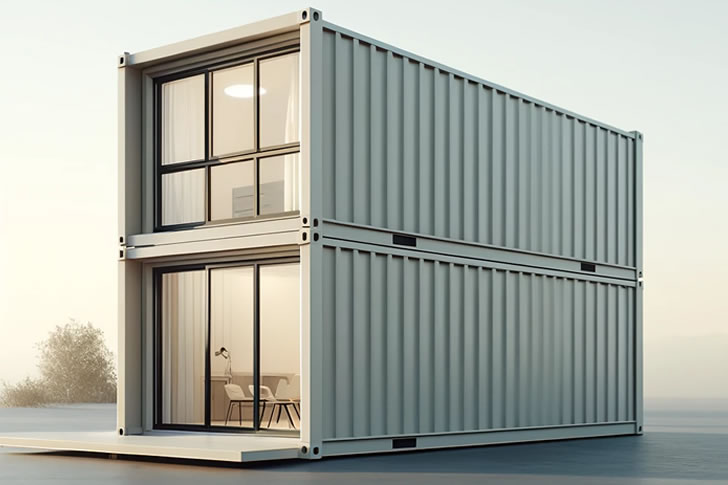How To Secure Cheap Container Homes For Seniors
In recent years, the demand for affordable and suitable housing options for seniors becomes increasingly pressing. Container homes, constructed from repurposed shipping containers, have emerged as a viable solution. We’ve carried out detailed research and might help seniors find cheap container houses that don’t compromise on comfort or quality.

Understanding the Appeal of Container Homes for Seniors
Container homes offer numerous advantages that align well with the needs and preferences of the elderly. Firstly, the cost of constructing a container home can be significantly lower than that of traditional housing. According to industry experts, a basic container home can start at approximately $10,000, a stark contrast to the median U.S. home price, which hovers around $374,900 as reported by the Federal Reserve Economic Data for 2022.
Moreover, container homes are inherently more compact, which is beneficial for seniors who prefer smaller spaces that are easier to maintain. Additionally, these homes can be designed with accessibility in mind, including features such as ramps, wider doorways, and single-floor layouts that avoid the use of stairs.
Strategies to Find Affordable Container Homes
1. Purchase Used Containers: Opting for used shipping containers is a great strategy to cut costs. These can range from $1,500 to $3,000 depending on size and condition, considerably cheaper than new ones. However, it’s crucial to inspect for structural integrity and the absence of harmful chemicals.
2. DIY Projects: For seniors who are handy and have experience in DIY projects, building a container home can drastically reduce expenses. Resources and guides are abundantly available online. Remember, though, that this option may require substantial time investment and the ability to handle physical and technical tasks.
3. Seek Prefabricated Kits: Numerous companies offer prefabricated container home kits. These kits come with pre-cut pieces and instructions for easy assembly, which can sometimes be completed with the help of friends or community members, thus saving on labor costs.
4. Explore Financing and Grants for Seniors: Some organizations provide assistance or grants specifically for seniors looking to afford housing. Checking with local non-profits, senior associations, and government agencies for available funding could open doors to additional resources.
5. Connect with Architects or Builders Specializing in Container Homes**: Partnering with professionals who specialize in container constructions can be beneficial. They often provide valuable insights into cost-effective materials and design techniques tailored to seniors’ needs.
Design Considerations for Senior-Friendly Container Homes
When planning a container home, specific design modifications can enhance livability for elderly residents:
– Accessibility Features: Incorporate wide doors, grab bars in bathrooms, no-threshhold showers, and other ADA-compliant features.
– Insulation and Ventilation: Proper insulation is crucial to keep the home warm in winter and cool in summer. Adequate ventilation systems are also essential to maintain air quality and humidity at comfortable levels.
– Lighting: Ample natural and artificial lighting is essential to ensure safety and well-being, reducing the risk of accidents.
– Low-Maintenance Materials: Choose materials that are easy to clean and maintain, reducing the physical strain associated with upkeep.
By carefully considering these aspects, container homes can be made both affordable and perfectly suited to senior living.
Conclusion
Container housing is an innovative solution that can cater well to the unique needs of senior citizens, particularly those who seek a simpler, cost-effective living option. By leveraging strategies such as buying used containers, undertaking DIY projects, and applying for specific grants, seniors can make the dream of owning an affordable, comfortable, and sustainable home a reality. Communities and policymakers can also play a pivotal role in facilitating these housing options to ensure that the growing senior population can live with dignity and ease.







Recent Comments